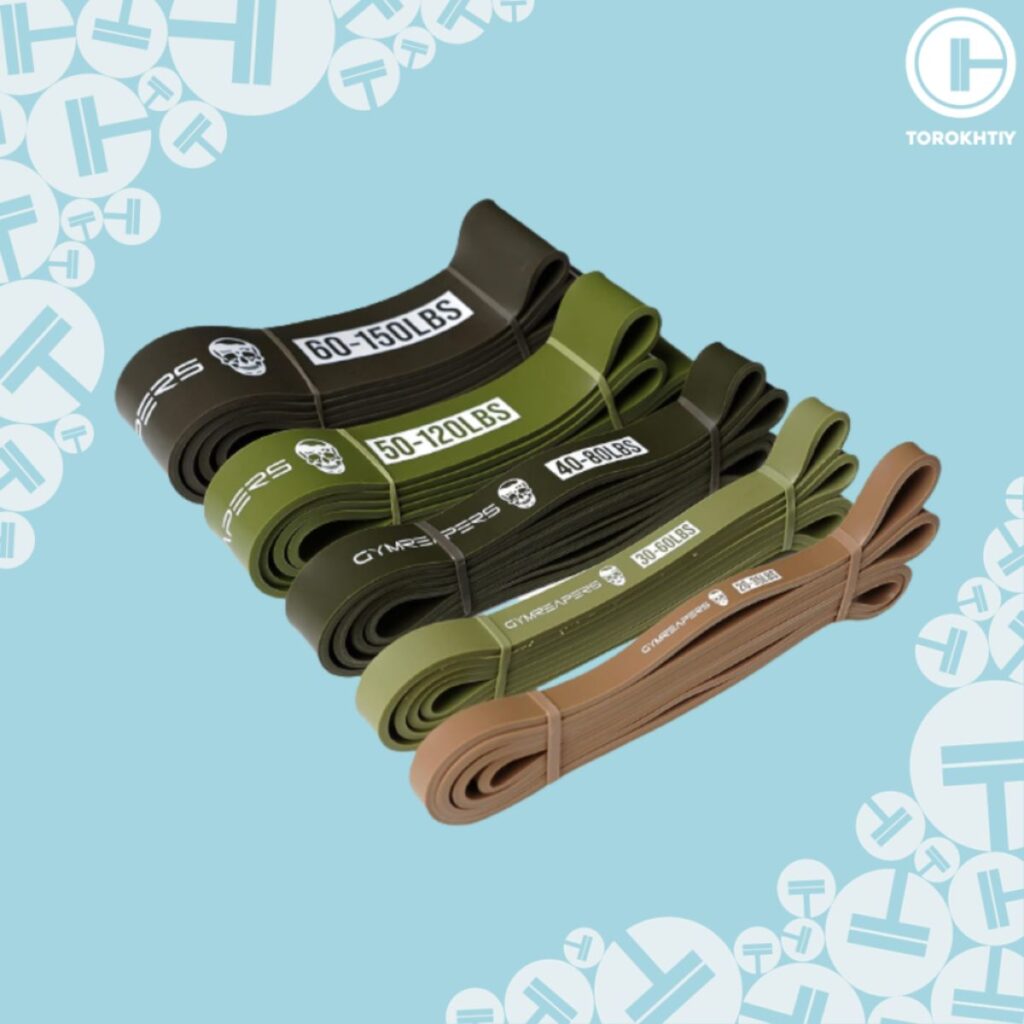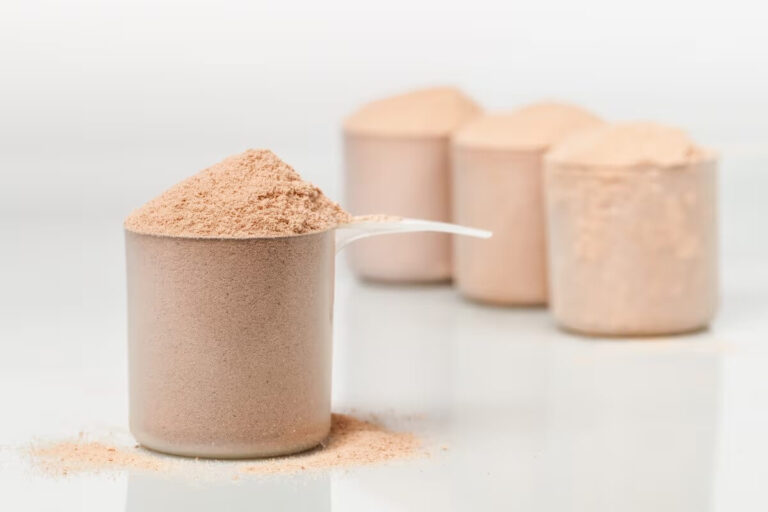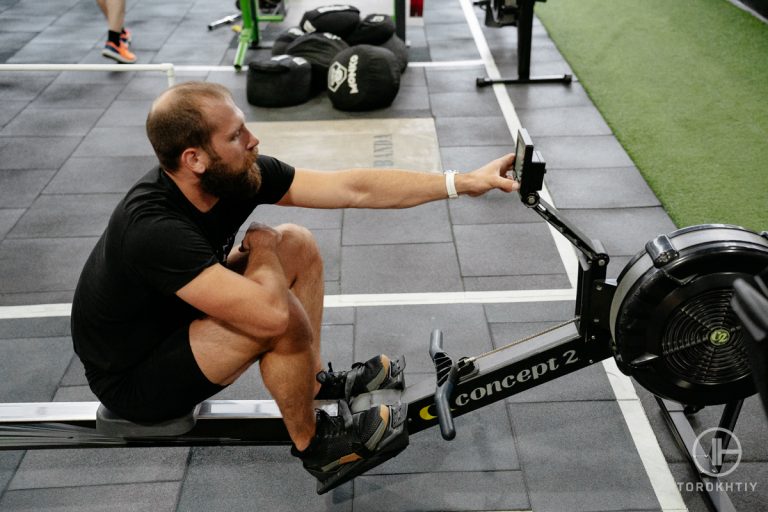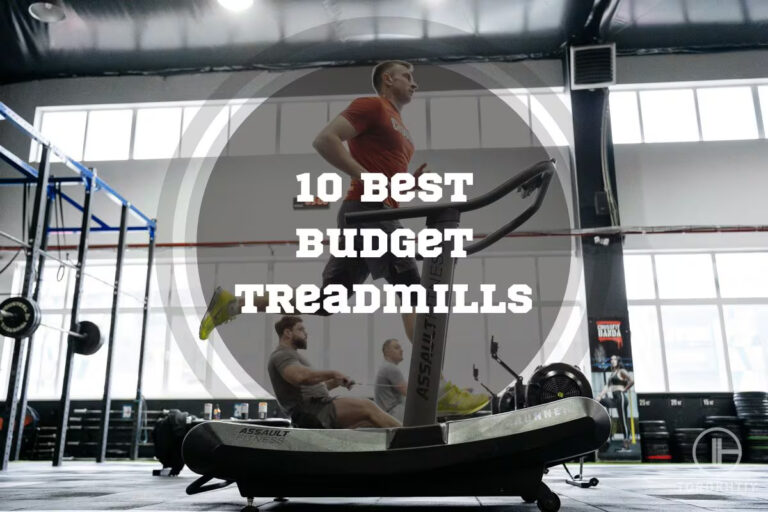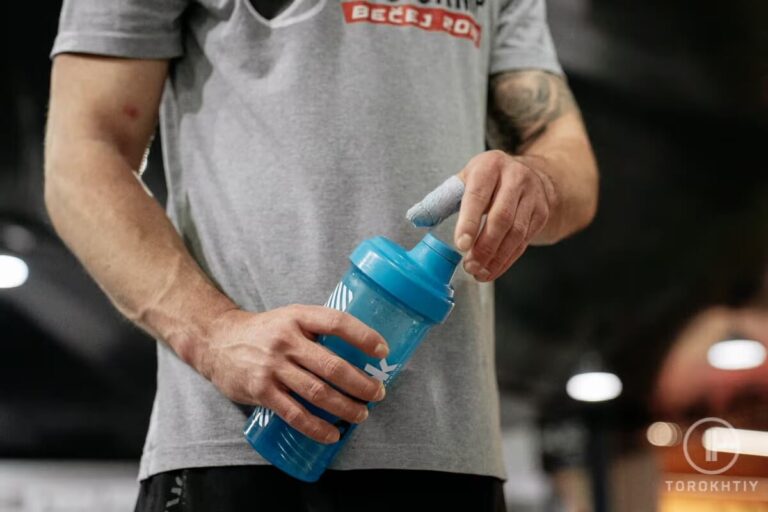How to Choose the Right Resistance Band? (Weight & Other Factors)
Reviewed by: Oleksiy Torokhtiy (21 years of Oly Lifting experience)
The first question that comes to mind when you decide on using a resistance band is probably: What weight resistance band should I choose?
When it comes to fitness and achieving results, a lot of types of equipment often get overlooked. Trends, social media, and ads play a big part here. Resistance bands, sadly, are one of these overlooked pieces. If you don’t have a lot of experience with them or with equipment in general, you most likely think there’s not much a band can do for your workouts and fitness goals. But that’s where you’re wrong.
A resistance bands’ use goes far beyond just workouts and even just looking at them from a fitness standpoint, they do so much and are some of the most versatile pieces of equipment you’ll find. That is – if you know what resistance to go for.
If you’re wondering about the weight, you’ve come to the right place. We’ll cover everything required for you to leave with all your questions about this topic answered – the resistance, criteria to consider when choosing a resistance band, and even a sneak peek of the bands we recommend.
Let’s not beat about the bush any longer, it’s time for you to transform your workouts!
What weight resistance band should I choose? The answer depends on your current fitness level and goals. If you’re a beginner, you should start with a lighter band, while those who are advanced can give heavier bands a try to really challenge their muscles.
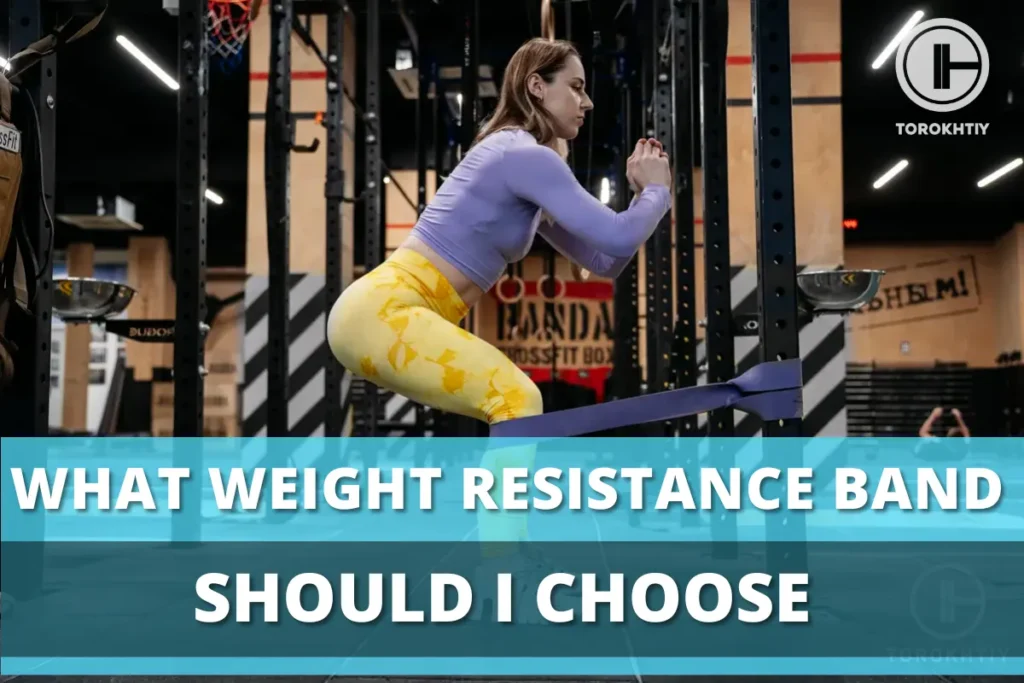
What Weight Resistance Band Should I Use?
You may be looking for a specific answer, something like: “Go with 10 lbs. to do this…” or “Try 8 lbs. to achieve that…”. Well, no such answer exists. There are no shortcuts here and no simple answers. Generally, resistance bands can do a lot – they improve flexibility, help build muscle, complement strength training, and they’re also used in rehabilitation.
Choosing the right resistance band weight is an important decision. After all, there’s a difference between an effective workout that produces results and a big, giant waste of time, so you want to make sure you do your research before making a choice.
The simplest answer is – it depends. It’s probably far from what you wanted to hear, but it’s the only correct answer anyone can give you. Weight depends on your current fitness level (which a lot of people overestimate, so keep that in mind) and the goal you’re trying to achieve.
The good thing is that resistance bands are suitable for everyone, even elders.
But there are still a couple of things to keep in mind.
Are you a beginner, or have you been working out for a long time and simply want to add variety to your workouts? Do you want to use bands for stretching or to actually challenge your muscles? Do you have any injuries or conditions you have to take into account?
All of these factors play a part in picking the correct resistance bands for your body.
If you want to pick the correct weight, you need to find a perfect balance between what the band offers and what you want from it.
It sounds a bit more complicated than it really is, but don’t worry – we’ll get into some more details right away.
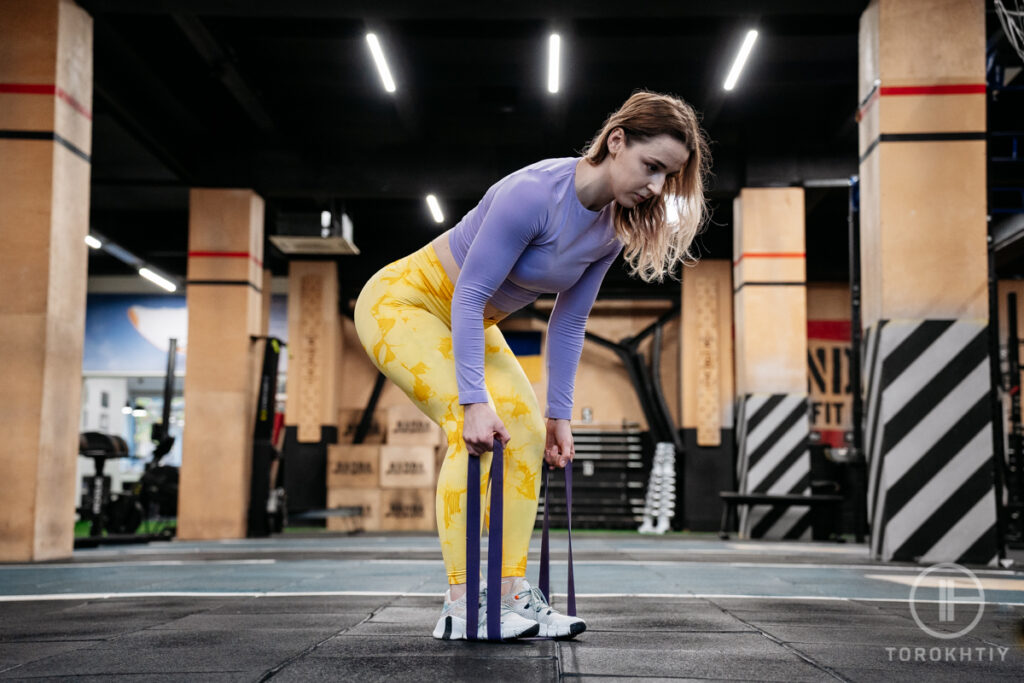
6 Factors to Consider When Choosing a Resistance Band
If you’re stressed about choosing a resistance band and fear you’ll make a mistake because there are so many options to choose from, then this is the section you’ll want to pay attention to.
1. Resistance Level
This is what’s going to determine the intensity of your workout. Beginners should start with lighter resistance, and those with advanced fitness levels can start with heavy bands.
2. Material and Quality
When it comes to material, you want something that’s durable, flexible and won’t snap after a month of use. Apart from rubber and latex bands, you can also choose fabric resistance bands – those do not move, shift or pinch during workouts.
3. Size and Length
What size resistance bands do I need? Apart from the weight, this is a common question you may be asking yourself. There are a lot of different sizes and lengths to choose from. Longer bands are a lot more versatile, but shorter ones are perfect for specific workouts. You need to consider your workout routine and the exercises you do when choosing length and size.
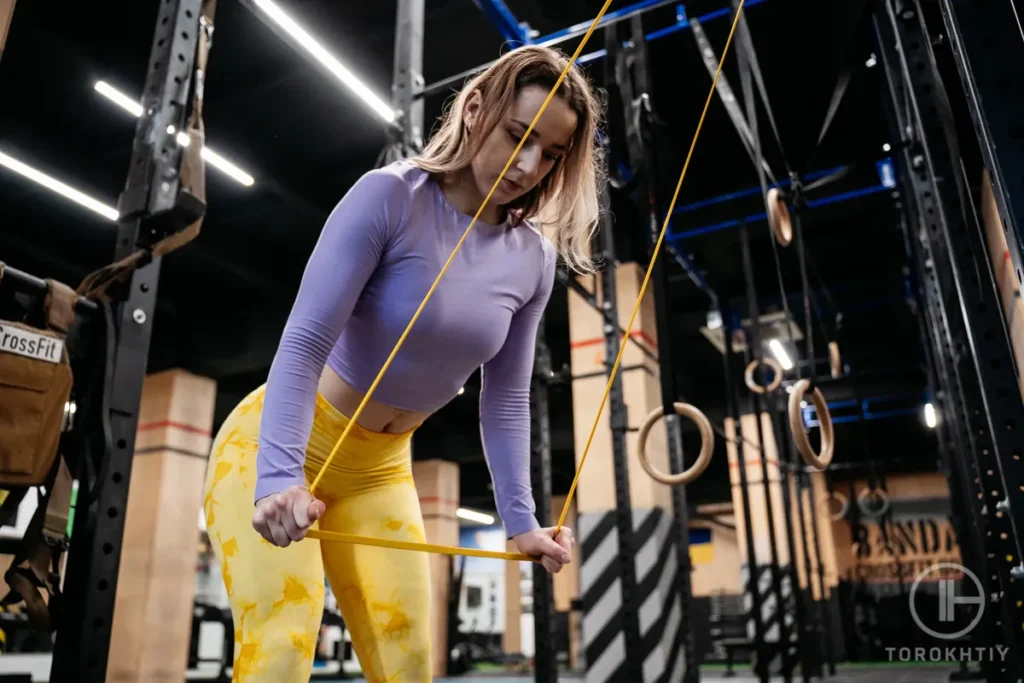
4. Color Coding
This is going to make your life a whole lot easier. Many resistance bands are color-coded, which means that the color indicates the level of resistance. Familiarize yourself with the resistance levels and the colors of your chosen manufacturer to decide on this. If you happen to get a few different bands, color-coding is going to make picking the specific one very easy, which is especially beneficial if you’re in a hurry.
Keep in mind that which color resistance band is strongest or weakest depends on the manufacturer.
5. Brand Reputation
Trusted brands are safer to buy from, especially for beginners who are not that familiar with resistance bands. Do your research on a brand itself and then read some user reviews to help you decide.
6. Budget
Price points vary and budget is usually a big factor in deciding what to buy. You want a balance between price and quality. This doesn’t mean that there aren’t some very good quality resistance bands at affordable prices (user reviews come in handy for this). However, pricier bands are often better quality and offer more versatility than super-cheap ones.
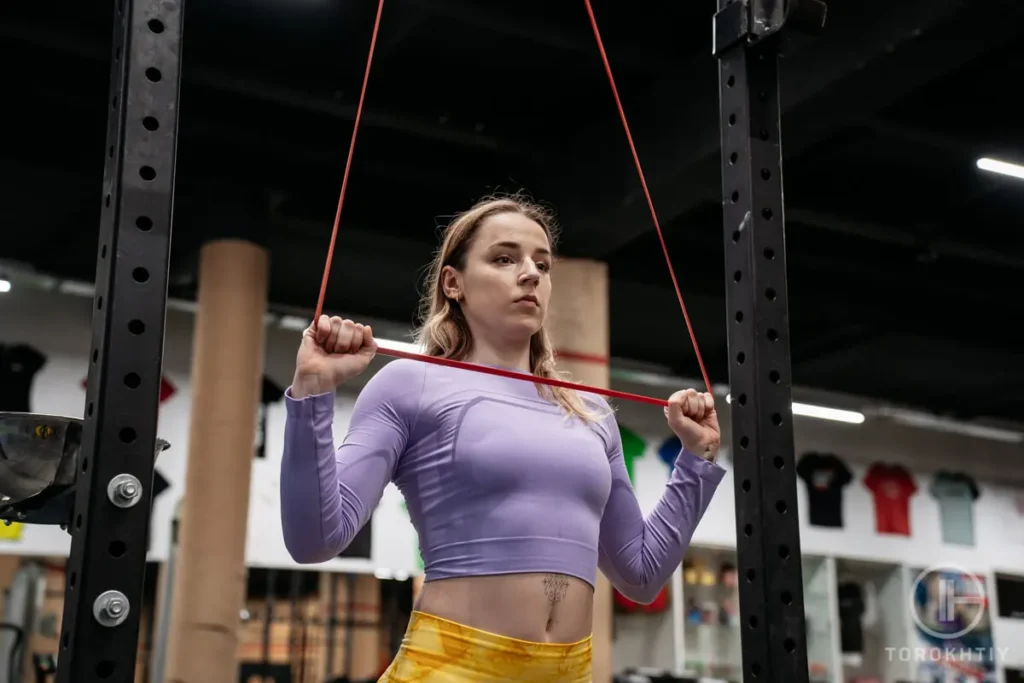
Understanding Resistance Band Levels
Now that we’ve covered the factors that will help you decide what to buy, there’s something we need to take a closer look at – the level of resistance.
The weight equivalent for each resistance level is very important when picking out a resistance band. This is because each level caters to different workouts and goals, so you’ll need one that suits your needs.
You can find a lot of useful information in the resistance band weight chart that’s usually provided by the manufacturer, but just in case you overlook that, here’s the breakdown:
1. Light Resistance (2-5 kg / 4.4-11 lbs)
The resistance band weight for beginners (light resistance) stands between 2-5 kg. Apart from being ideal for beginners, light resistance is also used in rehabilitation and recovery. If you thought light resistance bands lack versatility, you have another thing coming – they’re great for light toning and gentle mobility work.
2. Medium Resistance (5-15 kg)
If you want a moderate challenge, these are the way to go. Medium resistance bands are great for a lot of different exercises, including strength training and muscle toning. If light resistance doesn’t offer enough of a challenge for you, you may want to progress to medium resistance.
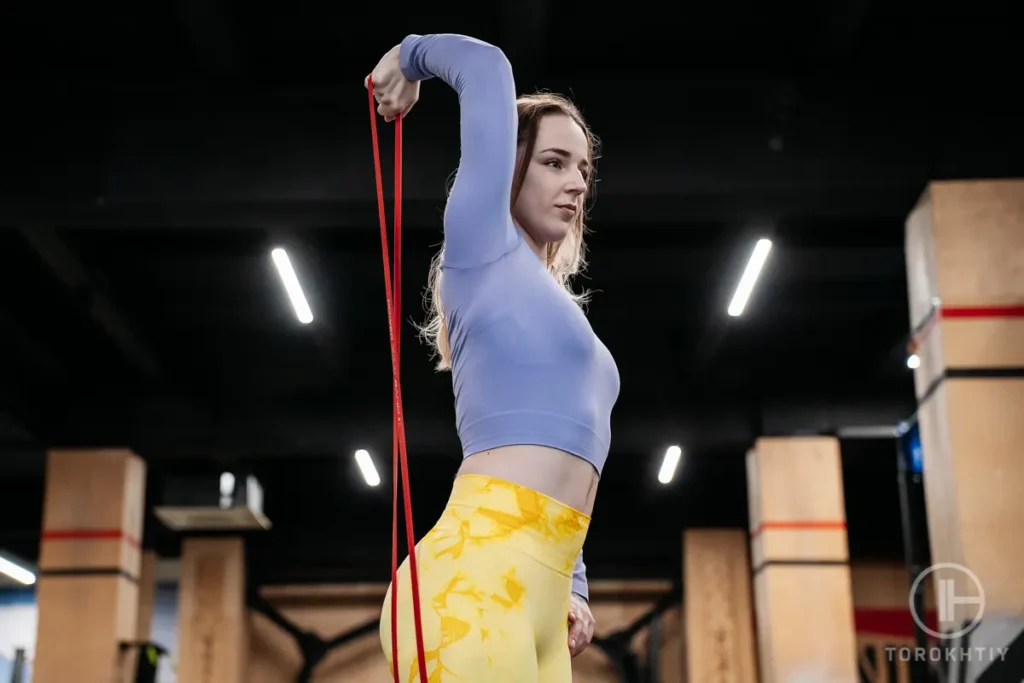
3. Heavy Resistance (15-25)
Heavy resistance bands offer significant tension, and they are suitable only for advanced users and those who want to build muscle and increase strength. They shine at compound movements and challenging workouts.
4. Extra Heavy Resistance (25+ kg)
These are designed for experienced users who want a very intense workout. They’re good for advanced strength training exercises and provide the highest level of resistance.
| RESISTANCE LEVEL | RECOMMENDED USE | TYPICAL USERS |
| Light | Ideal for beginners, rehabilitation and gentle mobility work | Beginners, people in recovery |
| Medium | Suitable for strength training and muscle toning | Intermediate users who want a challenge |
| Heavy | Significant tension for advanced users | Advanced users who want to build muscle |
| Extra Heavy | Intense workouts, advanced strength training | Experienced users seeking high resistance |
Testing and Selecting the Right Resistance in 6 Steps
So, you’ve chosen the resistance band to go for, but how do you know if it’s the right one? Sure, you’ve read reviews, and you’re confident the bands you’ve picked are of good quality. But are they right for your needs?
Here’s how to check:
1. Assess Your Strength
The first thing you need to do is to be honest with yourself and see what your fitness level is, how strong you are, and what workouts you plan to do. This is what’s going to make the biggest impact on whether the resistance band you choose is suitable or not.
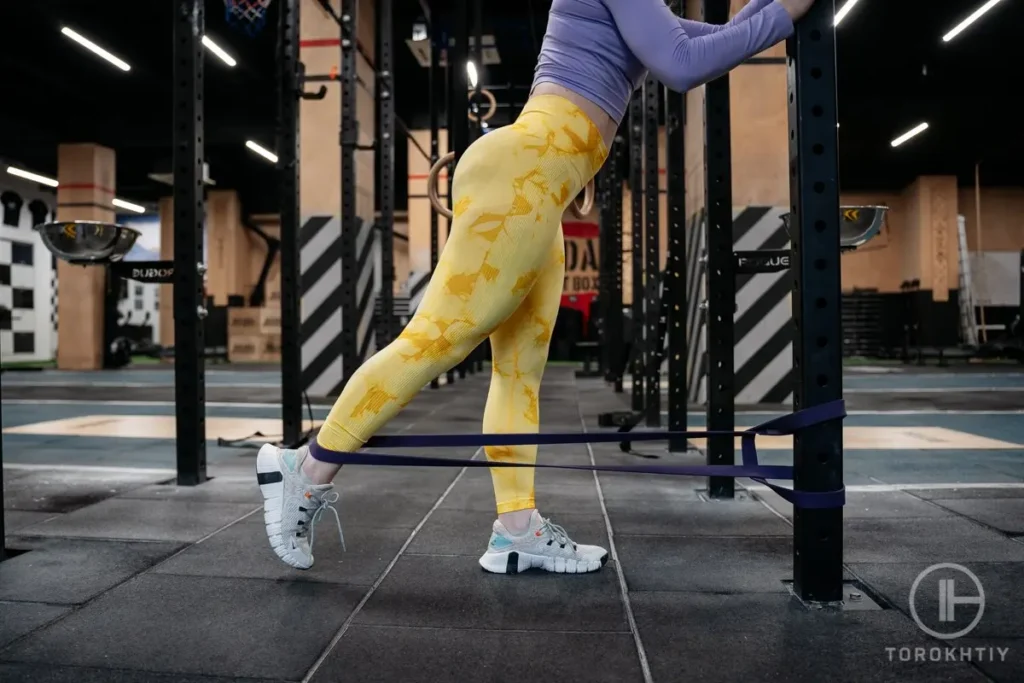
2. Start Light
If you don’t quite know what your fitness level is – that’s perfectly fine. Most people don’t know, they just don’t want to say it.
The best way to start is with light resistance. This way, you know for sure you won’t overexert yourself with the workout and, if the exercise isn’t intense enough for you, at least you’ll know you’re not at beginner level.
3. Consider Variety
This refers to the workouts you want to do. Some require lighter resistance and some need heavy. Think about what exercises you plan on doing and match the resistance band to that.
4. Progressive Approach
As you get stronger, you can slowly up the intensity of your workout by choosing a higher level of resistance. Slowly increasing the level of intensity is what’s going to keep your muscles continually challenged, so that you don’t reach a plateau.
5. Test the Tension
When in doubt – test the tension. Do a few reps of the workouts you usually do and see how the band performs. If the band is off and the intensity is not what you want, simply exchange it for another one.
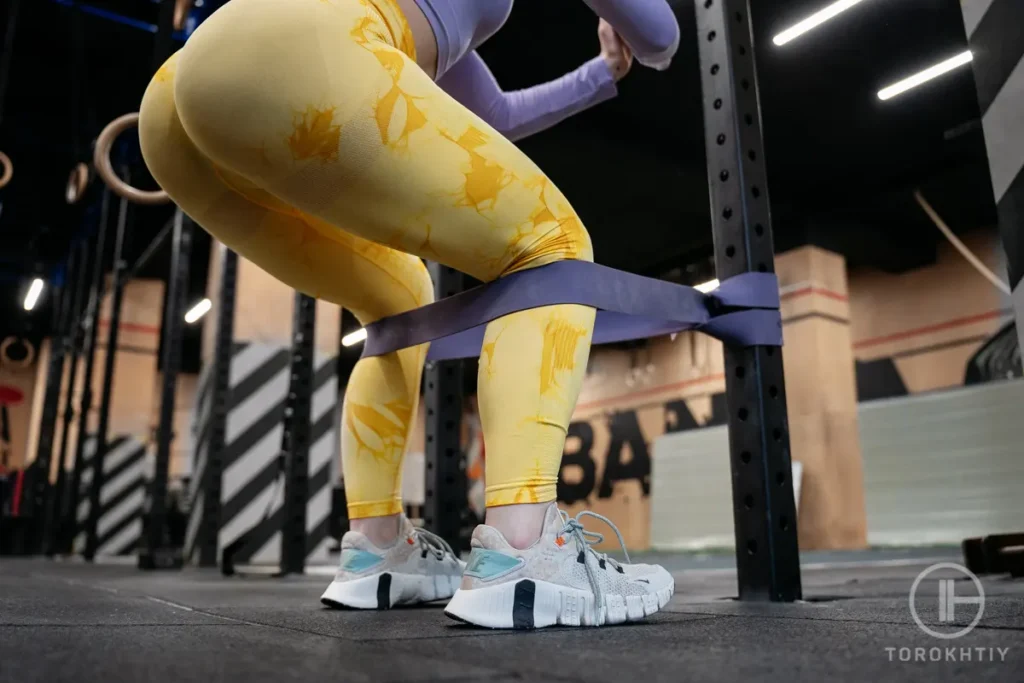
6. Consider Sets
Some resistance bands come in sets of 3 or more bands, each with a different resistance level. Think about investing in a set like that so you have a few different resistance band levels at your disposal.
Resistance Bands We Recommend
Gymreapers is known for their high-quality equipment, so it’s no surprise that this resistance band set is superb as well. The company is represented by world record holding powerlifters, IFBB Pro’s and world class trainers. And this is not just good marketing – their products really are that good.
These bands are made of latex and are surprisingly lightweight. They come in a set of 5 bands, so it’s easy to tailor the resistance according to the workout you’re doing – just change the band and you’re good to go!
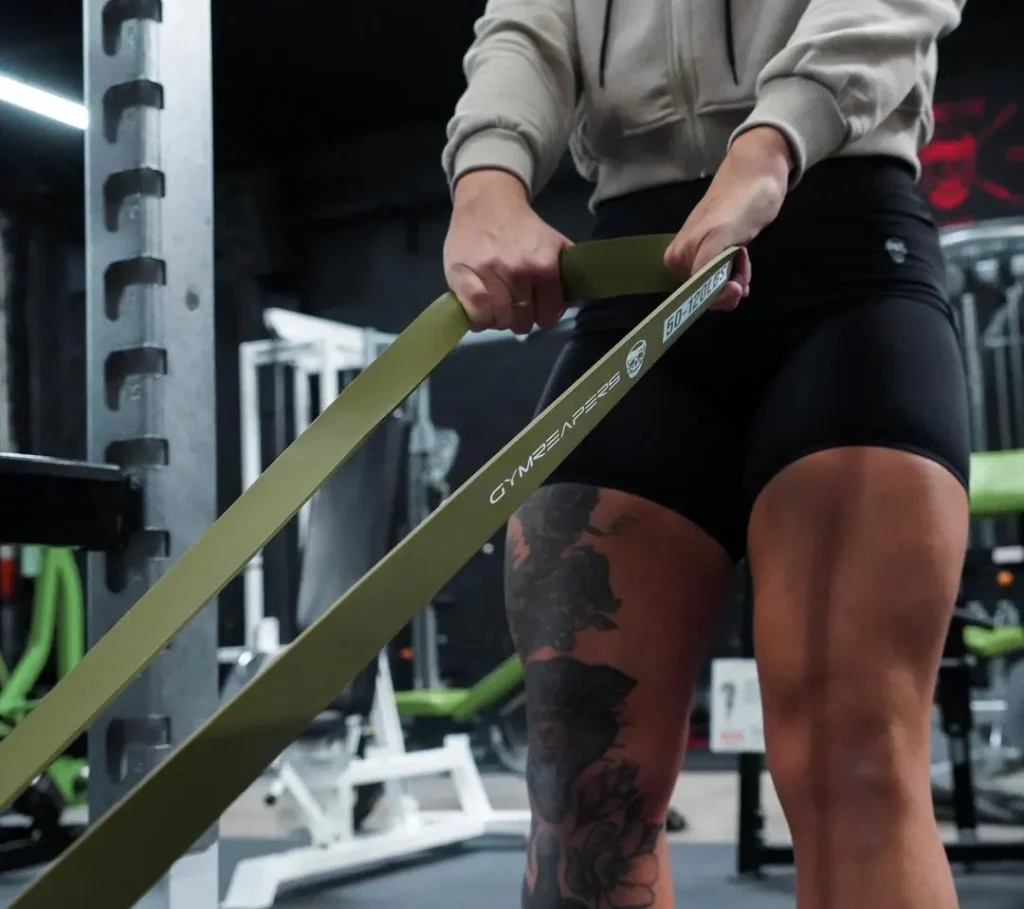
They’re very durable and at 41’’ long, they’re long enough for any kind of workout you want to include them in. They’re also easy to carry with you because they come with a carrying bag and they roll up to just 10’’.
You may notice a bit of a weird smell when you first get them, but that’s just how some latex bands are sometimes. The smell airs out in a few days, so it’s not a big deal.
All things considered, these bands are fantastic and they’ll be a great addition to anyone’s workout routine!
Positives:
Could be better:
FAQ
Is a 5 kg resistance band enough?
It can be, but it depends on what you’re looking for. 5 kg is enough for beginners, rehabilitation, or those focusing on light toning workouts. This is considered a medium resistance band weight, so it’s suitable for workouts like bicep curls, lateral raises, or leg extensions. But if you want to build muscle or are an advanced athlete, you’ll find 5 kg to be underwhelming.
What does a 25 kg resistance band mean?
It means that this type of band offers up to a maximum of 25 kilograms of resistance when stretched. This is a pretty high level of resistance and is good for advanced strength training.
Conclusion
So, there you have it! That’s all there is to know about resistance bands and which one to choose. Now, you can confidently pick a resistance band that’s going to refresh your workout routine and help you see the results you’re after.
What’s your take on this? I’d love to hear about how you started using resistance bands and how they have helped you! What weight did you start with and where are you now? Do you have a resistance band to recommend? Which workouts do you use resistance bands for?
Leave your opinions and tips in the comment section!
Also read:
- Resistance Band Rows
- Resistance Band Back Exercises
- Do Resistance Bands Build Muscle
- Benefits of Resistance Bands
- Bicep Exercises With Resistance Bands
- Resistance Band Chest Exercises
- Top Resistance Bands
References:
- Young Ran Yeun, “Effectiveness of resistance exercise using elastic bands on flexibility and balance among the elderly people living in the community: A systematic review and meta-analysis”; Research Gate, http://surl.li/lotbl (accessed 7 September, 2023).
- Dan Cooper, “Do resistance bands build muscle?”; Live Science, https://www.livescience.com/do-resistance-bands-build-muscle (accessed 7 September, 2023).
- Rachel C. Seguin, Alan C. Cudlip, Michael W. R. Holmes, “The Efficacy of Upper-Extremity Elastic Resistance Training on Shoulder Strength and Performance: A Systematic Review”; MDPI, https://www.mdpi.com/2075-4663/10/2/24 (accessed 7 September, 2023).
- Amrinder Singh, “Resistance Band Training: Effect on Physical Parameters”; Research Gate, http://surl.li/lotbr (accessed 7 September, 2023).
- “How Effective Are Resistance Bands for Strength Training?”; Cleveland Clinic, http://surl.li/lotby (accessed 7 September, 2023).
- Ita Daryanti Saragih, Ya-Ping Yang, Ice Septriani Saragih, Sakti Oktaria Batubara, Chia-Ju Lin, “Effects of resistance bands exercise for frail older adults: A systematic review and meta-analysis of randomised controlled studies”; National Library of Medicine, https://pubmed.ncbi.nlm.nih.gov/34289511/ (accessed 7 September, 2023).
- Gilmar Moraes Santos, Graziela Morgana Silva Tavares, “Mechanical evaluation of the resistance of elastic bands”; Research Gate, http://surl.li/lotdp (accessed 7 September, 2023).
Why Trust Us?
With over 20 years in Olympic Weightlifting, our team does its best to provide the audience with ultimate support and meet the needs and requirements of advanced athletes and professional lifters, as well as people who strive to open new opportunities and develop their physical capabilities with us.
By trusting the recommendations of our certified experts in coaching, nutrition, dietology, and sports training programming, as well as scientific consultants, and physiotherapists, we provide you with thorough, well-considered, and scientifically proven content. All the information given in the articles concerning workout programming, separate exercises, and athletic performance, in general, is based on verified data. We ensure that you can rely on our professionals’ pieces of advice and recommendations that can be treated as personalized ones which will benefit you and fully meet your needs.
The product testing process is described in more detail here
Author: Ihor Shymechko
Pro Olympic Weightlifter, Coach
Best Results: Snatch – 208 kg,
C&J – 240 kg
Ihor has been a professional weightlifter since 1996, boasting over two decades of competition experience. His notable achievements include clinching the European Championship in 2009 and securing a silver medal in the 105kg division at the Senior World Championships in 2011. Ihor represented his country in the 2008, 2012, and 2016 Summer Olympics. After retiring from competitive weightlifting, he transitioned to coaching, leveraging his vast experience to guide athletes who now compete on both national and international stages.
Reviewed by: Oleksiy Torokhtiy
Olympic Weightlifting Champion
Best Results: Snatch – 200 kg,
C&J – 240 kg
Oleksiy Torokhtiy is a professional athlete boasting 20 years of experience in Olympic weightlifting. With multiple European and World titles under his belt, he has showcased his prowess in two Olympic Games (Beijing 2008 and London 2012). Upon concluding his illustrious career, Oleksiy dedicated himself to coaching. By 2022, he had conducted over 200 weightlifting seminars worldwide. He is the visionary behind an international sportswear and accessories brand known for its motto, “Warm Body Cold Mind.” Additionally, he is an esteemed author and the creator of a series of training programs and eBooks.

